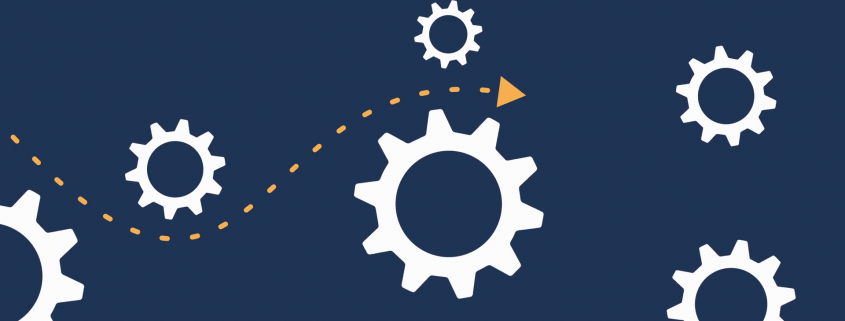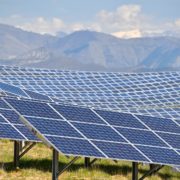Electric, Pneumatic, and Hydraulic Actuators: Understanding Their Differences
When it comes to power transmission method, there has to be no single technique that is the most ideal for its entire applications. There are some applications that include a mixture of different systems.
Speaking of system combination, both pneumatic and hydraulic systems used the term fluid power, why? Because these two utilize fluid to transfer power by moving the power energy from one place to another. One clear example is the transfer of gas and/or liquid. Generally, oil is the fluid used as a liquid and condensed air as a vapor.
Choosing which actuators to use for your application is not rocket science. If you have enough understanding between these three, then the selection process is just second nature. This article will share you differences between three actuators as well as their advantages and disadvantages.
How these Actuators Produce Force?
For you to understand clearly the differences between these three actuators — electric, hydraulic, and pneumatic — this article provides clear information regarding the mechanics of how every actuator system works. Moreover, you can always refer to your butterfly valve manufacturer for further details and assistance about these actuators.
Electric Linear Actuators
These are actuators that convert electrical energy into a vortex. The electric motor that is attached mechanically, shifts a lead screw. A threaded lead with equivalent threads that connect the screws will be prevented from twisting together with the screw. When the screw starts rotating, the nut will be taken together with the threads. Moreover, the nut moves depending on which way the screw pivots.
Pneumatic Linear Actuators
Pneumatic actuators comprise a piston placed within an empty cylinder. The piston moves within the cylinder through a pressure coming from external compressors; the cylinder shifts along the piston’s axis. The piston will then revert to its original position through a fluid supplied to the piston’s opposite side.
Hydraulic Linear Actuators
Actuators of this type function equivalently to pneumatic linear actuators, however, what makes the cylinder moves is the incompressible fluid coming from a pump instead of an air that is pressurized.
Let’s Talk About the Pros and Cons
Electrical Linear Actuators
Pros
- Apart from all actuators, this type offers the highest positioning control. The accuracy range is +/- 0.000315 in. and a less than 0.0000395 in. in repetition. When talking about setup, electrical actuators are extensible for any purpose with different force standard, they are pretty much repeatable and smooth.
- They can be programmed fast and easily. Electric actuators offer quick feedback for maintenance and diagnostic tests.
- Electric actuators provide thorough management of motion profiles, including encoders for velocity control, applied force, and position.
- Electric actuators are way quieter when talking about noise compared to hydraulic and pneumatic actuators.
- Safe and has zero hazards to the environment because they don’t have fluid leakage.
Cons
- When it comes to cost, electric actuators are higher compared to the other two — hydraulic and pneumatic. Prices may range from $150 to more than $2,000 depending on the electronics used and the blueprint.
- They are not applicable to all types of environment, compared to pneumatic actuators, which are free from hazardous elements and flammable areas.
- Electric actuators’ running motor may overheat, thus a higher possibility of wear and tear on the gear. The motor can be quite large and may create issues during the installation process.
- The chosen motor is often under a fixed setting in the actuator’s speed limits, force, and thrust. In case there is a need to change the force values, speed, and thrust, then you need to change the motor.
Pneumatic Linear Actuators
Pros
- One of the best advantages of pneumatic actuators is their simplicity in terms of production. They often have a pressure rating of 150 psi maximum with a bore that ranges from ½ to 8 inches in size. Not to mention, this type of actuators can produce forces that range from 50 to 38,000 lbf.
- They produce linear motion in a precise way through great 99% accuracy.
- These type of actuators’ applications engage in different areas with intense pressures and temperatures. The usual temperature ranges from -40°F to 250°F. When talking about inspection and safety, since pneumatic actuators use air, they avoid utilizing harmful materials.
- They also meet the standards of machine safety and explosion protection considering the fact that they produce zero magnetic obstruction since they don’t have many motors.
- Recently, pneumatic actuators have a lot of advancements in terms of materials, electronic integration, and managing condition. As per studies, the cost of pneumatic actuators is less than other actuator types. The typical pneumatic actuator costs around $50 to $150.
- They are lightweight, no consistent maintenance needed, and are comprised with sturdy components. These what make pneumatic actuators more of a cost-effective application of linear action.
Cons
- Despite its numerous advantages, pneumatic actuators are less effective compared to other methods of linear motion due to pressure loss and condensed air. A limit to air transmission and compressor mean that lesser pressure operations will most likely to have lesser forces and decrease speeds. Even if there is no movement, a compressor should continuously operate pressure.
- In order to be really efficient, pneumatic system actuators should be measured for a certain application. Thus, they cannot be utilized for other procedures. Precise control and effectiveness need equivalent valves and regulators, however this somehow creates a demand for complexity and costs.
- Regardless of convenient air availability, pneumatic actuators can get contaminated by lubrication, which often leads to maintenance and downtime. Companies who use pneumatic actuators still need to pay for condensed air, which makes it consumable. The lines and compressor on the other hand, are other issues for maintenance.
Hydraulic Linear Actuators
Pros
- Hydraulic system actuators are sturdy and are best suited for applications with extreme force. These type of actuators can generate forces 25x greater compared to pneumatic actuators of the same size. Moreover, they perform in high pressures that reach 4000 psi.
- Hydraulic actuators have extreme horsepower ratio which is 1 to 2 hp/lb. Better than pneumatic system actuators.
- They can support force and constantly twist with no pump that supplies abundant pressure or fluid because of fluid incompressibility.
- Hydraulic motors have motor situated at an ideal distance away with zero less power loss.
Cons
- Hydraulic actuators tend to have fluid leakage and this can lead to less productivity. The fluid leaks may lead to tidiness issues as well as surrounding deterioration of components.
- They need a lot of connecting parts, such as motors, noise-minimizing device, pumps, fluid reservoir, heat exchanges, and release valves. These what make the linear system hard to move and challenging to accommodate.
Conclusion
Knowing the differences between these three actuators will give you a better idea of what type is suited best for your specific applications. Considering that electric, pneumatic, and hydraulic actuators operate differently and have their respective advantages and disadvantages too. Always seek assistance when in doubt with your selection, we don’t want to choose the wrong type, don’t we? That will such be a pain in the budget. So, may this article serves as your reference.
















